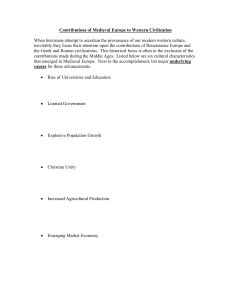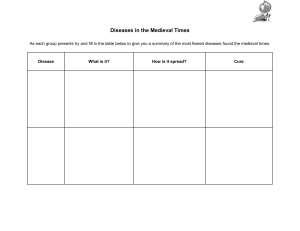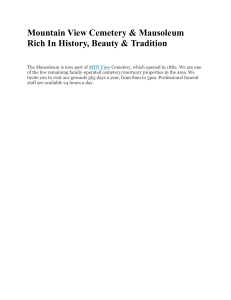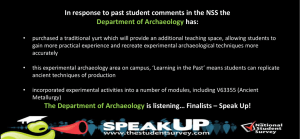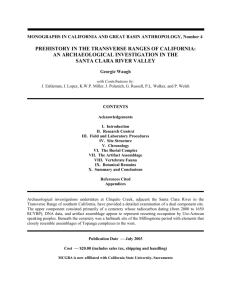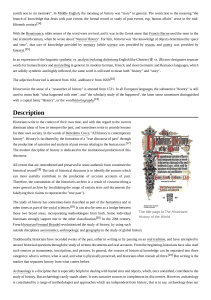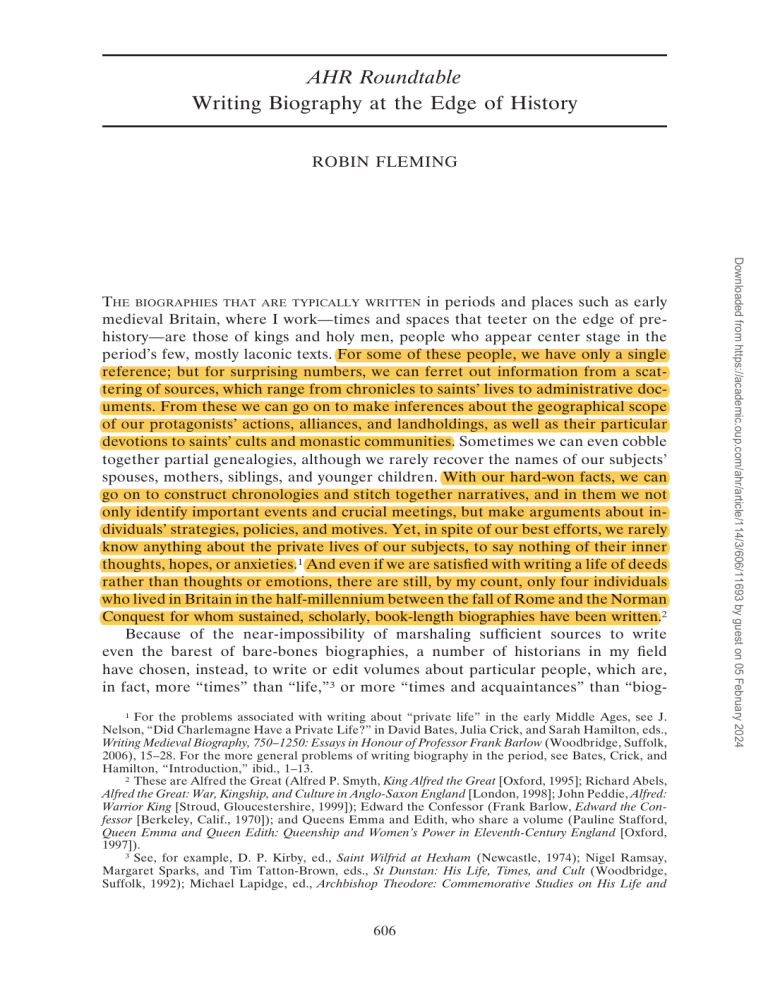
AHR Roundtable Writing Biography at the Edge of History ROBIN FLEMING 1 For the problems associated with writing about “private life” in the early Middle Ages, see J. Nelson, “Did Charlemagne Have a Private Life?” in David Bates, Julia Crick, and Sarah Hamilton, eds., Writing Medieval Biography, 750–1250: Essays in Honour of Professor Frank Barlow (Woodbridge, Suffolk, 2006), 15–28. For the more general problems of writing biography in the period, see Bates, Crick, and Hamilton, “Introduction,” ibid., 1–13. 2 These are Alfred the Great (Alfred P. Smyth, King Alfred the Great [Oxford, 1995]; Richard Abels, Alfred the Great: War, Kingship, and Culture in Anglo-Saxon England [London, 1998]; John Peddie, Alfred: Warrior King [Stroud, Gloucestershire, 1999]); Edward the Confessor (Frank Barlow, Edward the Confessor [Berkeley, Calif., 1970]); and Queens Emma and Edith, who share a volume (Pauline Stafford, Queen Emma and Queen Edith: Queenship and Women’s Power in Eleventh-Century England [Oxford, 1997]). 3 See, for example, D. P. Kirby, ed., Saint Wilfrid at Hexham (Newcastle, 1974); Nigel Ramsay, Margaret Sparks, and Tim Tatton-Brown, eds., St Dunstan: His Life, Times, and Cult (Woodbridge, Suffolk, 1992); Michael Lapidge, ed., Archbishop Theodore: Commemorative Studies on His Life and 606 Downloaded from https://academic.oup.com/ahr/article/114/3/606/11693 by guest on 05 February 2024 THE BIOGRAPHIES THAT ARE TYPICALLY WRITTEN in periods and places such as early medieval Britain, where I work—times and spaces that teeter on the edge of prehistory—are those of kings and holy men, people who appear center stage in the period’s few, mostly laconic texts. For some of these people, we have only a single reference; but for surprising numbers, we can ferret out information from a scattering of sources, which range from chronicles to saints’ lives to administrative documents. From these we can go on to make inferences about the geographical scope of our protagonists’ actions, alliances, and landholdings, as well as their particular devotions to saints’ cults and monastic communities. Sometimes we can even cobble together partial genealogies, although we rarely recover the names of our subjects’ spouses, mothers, siblings, and younger children. With our hard-won facts, we can go on to construct chronologies and stitch together narratives, and in them we not only identify important events and crucial meetings, but make arguments about individuals’ strategies, policies, and motives. Yet, in spite of our best efforts, we rarely know anything about the private lives of our subjects, to say nothing of their inner thoughts, hopes, or anxieties.1 And even if we are satisfied with writing a life of deeds rather than thoughts or emotions, there are still, by my count, only four individuals who lived in Britain in the half-millennium between the fall of Rome and the Norman Conquest for whom sustained, scholarly, book-length biographies have been written.2 Because of the near-impossibility of marshaling sufficient sources to write even the barest of bare-bones biographies, a number of historians in my field have chosen, instead, to write or edit volumes about particular people, which are, in fact, more “times” than “life,”3 or more “times and acquaintances” than “biog- Writing Biography at the Edge of History 607 Influence (Cambridge, 1995); Clare Stancliffe and Eric Cambridge, eds., Oswald: Northumbrian King to European Saint (Stamford, 1995); Richard Gameson, ed., St Augustine and the Conversion of England (Stroud, Gloucestershire, 1999); Donald A. Bullough, Alcuin: Achievement and Reputation (Leiden, 2004); Julia Barrow and N. P. Brooks, eds., St Wulfstan and His World (Aldershot, Hants, 2005). 4 For prosopographical treatments of the people surrounding single individuals, see Simon Keynes, The Diplomas of King Æthelred “the Unready” (978–1016): A Study in Their Use as Historical Evidence (Cambridge, 1980); Robin Fleming, Kings and Lords in Conquest England (Cambridge, 1991); M. K. Lawson, Cnut: The Danes in England in the Early Eleventh Century (London, 1993). 5 For one of the clearest articulations of prosopographical method, see C. P. Lewis, “Joining the Dots: A Methodology for Identifying the English in Domesday Book,” in K. S. B. Keats-Rohan, ed., Family Trees and the Roots of Politics: The Prosopography of Britain and France from the Tenth to the Twelfth Century (Woodbridge, Suffolk, 1997), 69–88. 6 Examples are long-standing and legion. For some seminal examples, see Lawrence Stone, “Prosopography,” Daedalus 100 (1971): 46–71; A. H. M. Johns, J. R. Martindale, and J. Morris, The Prosopography of the Later Roman Empire, 3 vols. (Cambridge, 1971–1992); C. Warren Hollister, “Magnates and ‘Curiales’ in Early Norman England,” Viator 8 (1976): 63–81; the articles published since 1980 in the journal Medieval Prosopography; Ralph W. Mathisen, Studies in the History, Literature, and Society of Late Antiquity (Amsterdam, 1991). For examples of recent work, see Francisco Salvador Ventura, Prosopografı́a de Hispania Meridional (Granada, 1998); Keats-Rohan, Family Trees and the Roots of Politics; and K. S. B. Keats-Rohan, Prosopography Approaches and Applications: A Handbook (Oxford, 2007). For examples of ongoing large-scale prosopographical database projects, see PASE: Prosopography of Anglo-Saxon England, http://www.pase.ac.uk/, and Prosopography of the Byzantine World, http://www.pbw.kcl.ac.uk/. 7 For examples, see Stephen Greenblatt, Will in the World: How Shakespeare Became Shakespeare (New York, 2004); Craig Harline and Eddy Put, A Bishop’s Tale: Mathias Hovius among His Flock in Seventeenth-Century Flanders (New Haven, Conn., 2000); John Demos, The Unredeemed Captive: A Family Story from Early America (New York, 1994); Laurel Thatcher Ulrich, A Midwife’s Tale: The Life of Martha Ballard, Based on Her Diary, 1785–1812 (New York, 1990); Judith C. Brown, Immodest Acts: The Life of a Lesbian Nun in Renaissance Italy (Oxford, 1986); Gene Brucker, Giovanni and Lusanna: Love AMERICAN HISTORICAL REVIEW JUNE 2009 Downloaded from https://academic.oup.com/ahr/article/114/3/606/11693 by guest on 05 February 2024 raphy.”4 Still, although these volumes are as much about backdrop as about star, they do allow us to see individual actors in ways that few other studies do. Given the unfortunate realities that govern our sources, it is little wonder that scholars in the field often channel their biographical impulses into prosopography, or multiple biography.5 Prosopography has proven fruitful, since analyzing gross and generalized patterns across dozens of contemporary lives is almost always more feasible than reconstituting a single life in detail; and this strategy has allowed us to populate our period with thousands of connected historical actors.6 Still, because of the ways in which early medieval texts were both written and preserved, even our brief prosopographical sketches are limited, by and large, to men, to monks, to the holders of land, and to people living after ca. 700—in short, a minuscule subsection of the people who actually lived and died in Britain during our period. Furthermore, the individuals who emerge from such studies are often, in the end, not much more than the sum of their charter attestations. As a result, we are left with a historical period bristling with names, dates, and events, but devoid, by and large, of living, breathing human beings; and one of the unfortunate consequences of this is that even those of us working in the field sometimes have a hard time remembering that the men, women, and children we study were actually people, rather than faceless automatons pushed across time and space by anonymous, impersonal historical forces. Certainly, none of our efforts have produced protagonists who can stand up to the men and women who sit at the center of those rollicking, life-filled “speculative biographies” so successfully written by early modernists, and so avidly read by historians and laypeople alike.7 608 Robin Fleming and Marriage in Renaissance Florence (Berkeley, Calif., 1986); Paul S. Seaver, Wallington’s World: A Puritan Artisan in Seventeenth-Century London (Stanford, Calif., 1985); Natalie Zemon Davis, The Return of Martin Guerre (Cambridge, Mass., 1983); Carlo Ginzburg, The Cheese and the Worms: The Cosmos of a Sixteenth-Century Miller (Baltimore, 1980). 8 Tim Malim and John Hines, The Anglo-Saxon Cemetery at Edix Hill (Barrington A), Cambridgeshire: Excavations, 1989–1991 and a Summary Catalogue of Material from 19th Century Interventions (York, 1998), 52–53 and fig. 3.12. 9 Ibid., 292–303; Corinne Duhig, “The Human Skeletal Material,” ibid., 154 –199; Patricia StuartMacadam and Susan Kent, eds., Diet, Demography and Disease: Changing Perspectives on Anemia (New York, 1992). 10 Robin Fleming, “Bones for Historians: Putting the Body Back into Biography,” in Bates, Crick, and Hamilton, Writing Medieval Biography, 29– 48, at 39– 41. 11 Although admittedly this injury happened more to men than to women; Margaret A. Judd and Charlotte A. Roberts, “Fracture Trauma in a Medieval British Farming Village,” American Journal of Physical Anthropology 109 (1999): 229–243. For the crippling injuries sustained by one of Eighteen’s neighbors, see Duhig, “The Human Skeletal Material,” 197–198. 12 Not that the vast majority of women who reached the ripe old age of twenty-five had many more years to live: almost three-quarters would be dead by the age of thirty-five; Fleming, “Bones for Historians,” 35–39. Given these numbers, it is more than likely that Eighteen’s own mother was already dead when Eighteen herself died. It is also probable that patterns of women’s work and diet, acting in conjunction with the physical demands of pregnancy and childbirth, played a crucial role in women’s mortality rates; Pamela K. Stone and Dana Walrath, “The Gendered Skeleton: Anthropological Interpretations of the Bony Pelvis,” in Rebecca Gowland and Christopher Knüsel, eds., The Social Archaeology of Funerary Remains (Oxford, 2006), 168–178. 13 Malim and Hines, Anglo-Saxon Cemetery, 156–161. AMERICAN HISTORICAL REVIEW JUNE 2009 Downloaded from https://academic.oup.com/ahr/article/114/3/606/11693 by guest on 05 February 2024 SO, WITH THE LIMITATIONS OF OUR TEXTS firmly in mind, let me attempt here to write a different kind of early medieval biography, that of a seventh-century Englishwoman. Before I begin, however, I need to make clear that neither she nor anyone she knew ever appears in a text. What we have instead of words on parchment are her skeleton, her grave goods, and the skeletons of some of her family and neighbors. Eighteen, as I will call her—because that is the number archaeologists assigned her— was found in a grave dug in a communal cemetery near Barrington, in Cambridgeshire.8 In life, she had been on the tall side; indeed, she was as tall as some men. Her early childhood had been a healthy one. She had never suffered from chronic anemia, the way almost a fifth of her neighbors had, and as a child she had never experienced serious, growth-stopping malnourishment or infection.9 In this she was lucky, because the early Middle Ages were hard on sick children, and half of her contemporaries died before their seventeenth year.10 So, although Eighteen herself managed to avoid a fatal bout of measles or summer diarrhea, she nonetheless would have seen many babies, toddlers, and children die over the course of her own short life. Eighteen was lucky in other ways. She had never, for example, fallen so badly that she had broken a limb, a serious, sometimes fatal injury in the period.11 Still, hers was an early death. Most of the women buried alongside her died after the age of twenty-five, probably because they married late and did not begin succumbing to the complications of pregnancy and childbirth until their mid-twenties.12 Eighteen, however, did not make it that far; indeed, she died sometime between her eighteenth and her twenty-fourth year.13 The community in which Eighteen lived was a little old-fashioned. It was not as hierarchical as some seventh-century communities: certainly, there were no newfangled “princely burials” in the cemetery where her community laid its dead to Writing Biography at the Edge of History 609 14 H. Geake, “Burial Practice in Seventh- and Eighth-Century England,” in M. O. H. Carver, ed., The Age of Sutton Hoo: The Seventh Century in North-Western Europe (Woodbridge, Suffolk, 1992), 83– 94, at 85–86. 15 Helen Geake, The Use of Grave-Goods in Conversion Period England, c. 600–c. 850 (Oxford, 1997). 16 Malim and Hines, Anglo-Saxon Cemetery, 45, 59. 17 Ibid., 52–53 and fig. 3.38. 18 Duhig, “The Human Skeletal Material,” 176–177 and fig. 14.7. 19 Keith Manchester and Charlotte Roberts, “The Palaeopathology of Leprosy in Britain: A Review,” World Archaeology 21, no. 2 (1989): 265–272; S. Anderson, “Leprosy in a Medieval Churchyard in Norwich,” Current and Recent Research in Osteoarchaeology 3 (1998): 31–37; C. A. Roberts, “The Antiquity of Leprosy in Britain: The Skeletal Evidence,” in Charlotte A. Roberts, Mary E. Lewis, and K. Manchester, eds., The Past and Present of Leprosy: Archaeological, Historical, and Palaeopathological and Clinical Approaches (Oxford, 2002), 213–221. 20 Howard Williams, Death and Memory in Early Medieval Britain (Cambridge, 2006), 102. There are examples of “bad death” graves in nearly every cemetery. A contemporary of Eighteen’s, for example, a woman whose skeleton was excavated from a cemetery at Sewerby, in Yorkshire, was found sprawled on her belly on top of the coffin of another woman, and it looks as if she was buried alive; Susan M. Hirst, An Anglo-Saxon Inhumation Cemetery at Sewerby, East Yorkshire (York, 1985); Hirst, “Death and the Archaeologist,” in Martin Carver, ed., In Search of Cult: Archaeological Investigations in Honour of Philip Rahtz (Woodbridge, Suffolk, 1993), 41– 43. And a man found at Roche Court Down, in Wiltshire, had been decapitated, and then his skull was smashed to bits and buried separately from the rest of his AMERICAN HISTORICAL REVIEW JUNE 2009 Downloaded from https://academic.oup.com/ahr/article/114/3/606/11693 by guest on 05 February 2024 rest.14 Nor were women there, if their graves are anything to go by, wearing much continental exotica, objects that were wildly popular in other contemporary settlements.15 Still, some of Barrington’s dead were given more elaborate sendoffs than others, and this includes Eighteen herself. She lay next to a couple of high-status men who had been buried with shields and spears; but it was she, not the men, who had the most impressive grave goods in the cemetery.16 In death, she wore a necklace hung with silver rings, and she had latch-lifters hanging from her belt, accessories reserved for high-ranking women. She was also laid to rest with special things—an oak bucket, a small vessel made from maple wood, a weaving batten, and a box full of little treasures, including a sheep’s knuckle and a fossilized sea urchin.17 The most interesting thing about her grave, though, is that it contained a bed, and hers is one of only a dozen bed burials known in England. The bed served as a kind of inside-out coffin, making it possible for mourners standing around Eighteen’s open grave to view her unshrouded, dressed corpse and all its accompanying finery, things that had been carefully arranged by someone who, at some point, would have had to get into the grave with her to tidy her jewelry and arrange her grave goods just so. The most astounding thing about Eighteen herself, though, is not her bed but her skull. It is the skull of a leper.18 Given what we know about the disease, she probably contracted it from someone within her own household in her early teens, but its telltale lesions would not have appeared for another three or four years.19 Although the disease, by the time of her death, had not caused her to lose any fingers or toes, as sometimes happens with leprosy, her lower legs were badly infected, and her face was terribly disfigured. She had lost much of the bone supporting her upper front teeth and nose. Her mouth and nose would have collapsed inward, and her face would have been an infected, discharging horror. Yet, in spite of her deformities, she was treated in death with great respect, buried with considerable wealth and some ceremony in a well-dug grave lying at the heart of a communal cemetery. There is no sign here that Eighteen had led a pariah’s life the way later medieval lepers would. Nor does her grave, given the care and resources put into it, suggest that her death was viewed by those who buried her as a “bad death.”20 Indeed, in the years 610 Robin Fleming after she died, people returned to her grave, choosing to bury others—a child and two adults—in graves that cut into her own, something that happened nowhere else in the cemetery.21 body, surrounded with a ring of flints; J. F. S. Stone, “Interments of Roche Court Down, Winterslow,” Wiltshire Archaeological and Natural History Magazine 45 (1932): 568–582; M. L. Tildesley, “The Human Remains from Roche Court Down,” Wiltshire Archaeological and Natural History Magazine 45 (1932): 583–599. 21 Malim and Hines, The Anglo-Saxon Cemetery, 312–313; Williams, Death and Memory, 102. 22 The following six books read together can provide historians with a basic and accessible introduction: Simon Mays, The Archaeology of Human Bones (London, 1998); Tony Waldron, Counting the Dead: The Epidemiology of Skeletal Populations (Chichester, Sussex, 1994); Charlotte Roberts and Keith Manchester, The Archaeology of Disease, 3rd ed. (Stroud, Gloucestershire, 2005); Donald J. Ortner, Identification of Pathological Conditions in Human Skeletal Remains, 2nd ed. (San Diego, 2003); Charlotte Roberts and Margaret Cox, Health and Disease in Britain: From Prehistory to the Present Day (Stroud, Gloucestershire, 2003); Theya Molleson and Margaret Cox, The Spitalfields Project, vol. 2: The Anthropology: The Middling Sort (York, 1993). 23 For a good introduction, see Clark Spencer Larsen, Bioarchaeology: Interpreting Human Behavior from the Human Skeleton (Cambridge, 1997); and Christopher Knüsel, “Bone Adaptation and Its Relationship to Physical Activity in the Past,” in Margaret Cox and Simon Mays, eds., Human Osteology in Archaeology and Forensic Science (London, 2000), 381– 401. For interesting studies of patterns of work in burial communities, see Shawn M. Phillips, “Worked to the Bone: The Biomechanical Consequences of ‘Labor Therapy’ at a Nineteenth Century Asylum,” in D. Ann Herring and Alan C. Swedlund, eds., Human Biologists in the Archives: Demography, Health, Nutrition and Genetics in Historical Populations (Cambridge, 2003), 96–129; Ping Lai and Nancy C. Lovell, “Skeletal Markers of Occupational Stress in the Fur Trade: A Case Study from a Hudson’s Bay Company Fur Trade Post,” International Journal of Osteoarchaeology 2, no. 3 (1992): 221–234. For interesting studies of individual bodies, see Christopher Knüsel, “Activity-Related Changes in Casualties from the Medieval Battle of Towton, A.D. 1461,” in Veronica Fiorato, Anthea Boylston, and Christopher Knüsel, eds., Blood Red Roses: The Archaeology of a Mass Grave from the Battle of Towton, AD 1461 (Oxford, 2000), 103–118; A. J. Stirland, “Asymmetry and Activity-Related Change in the Male Humerus,” International Journal of Osteoarchaeology 3, no. 2 AMERICAN HISTORICAL REVIEW JUNE 2009 Downloaded from https://academic.oup.com/ahr/article/114/3/606/11693 by guest on 05 February 2024 DO THESE LAST FEW PARAGRAPHS constitute a biography? Should we even attempt to write the life story of a nameless woman whose words and thoughts are unrecoverable? Is biography flexible enough to accommodate lives that are written not from texts but from material evidence? Perhaps the answer to all of these questions is “no.” And yet, there is that wrecked face, which is not the generic face of a generic leper, but the particular face of a very real woman, the dim outlines of whose life can be perceived if we think about it in the context of the lives of those other individuals whose real and particular skeletons surrounded her own. It seems clear to me, at least, that the work of archaeologists can help us recuperate a world of intimate details about long-dead beings whose lives were never captured in words.22 Indeed, I would argue that with their help, we historians may well be able to write more convincing lives than we have in the past. Still, rather like the individuals whom prosopographers pursue, the skeletons that archaeologists dig up need to be thought about in the context of whole communities and generations of skeletons. But once we have established patterns and prevalences of life, health, and death—things that broad studies of this material can reveal—we can then go on to disaggregate a few individuals from all the rest. Interesting inferences about the working lives of individuals, for example, can occasionally be made from skeletal remains.23 We know, for example, that women living in the early medieval period spent long hours on their haunches, because their Writing Biography at the Edge of History 611 (1993): 105–113; A. J. Stirland and T. Waldron, “Evidence for Activity Related Markers in the Vertebrae of the Crew of the Mary Rose,” Journal of Archaeological Science 24, no. 4 (1997): 329–335. 24 Eve-Line Boulle, “Evolution of Two Human Skeletal Markers of the Squatting Position: A Diachronic Study from Antiquity to the Modern Age,” American Journal of Physical Anthropology 115, no. 1 (2001): 50–56. 25 Theya Molleson, “The Eloquent Bones of Abu Hureya,” Scientific American 271 (1994): 70–75. 26 Theya Molleson, “A Norse Age Boatman from Newark Bay,” Papers and Pictures in Honour of Daphne Home Lorimer, MBE, Orkney Archaeological Trust (2004), http://www.orkneydigs.org.uk/dhl/ papers/tm/index.html. 27 Ibid. 28 A host of isotopes lodged in skeletal remains—carbon, nitrogen, lead, oxygen, strontium, sulfur— can be used to trace migration and/or diet. For recent examples using isotopes to uncover diet, see Karen L. Privat, Tamsin C. O’Connell, and Michael P. Richards, “Stable Isotope Analysis of Human and Faunal Remains from the Anglo-Saxon Cemetery at Berinsfield, Oxfordshire: Dietary and Social Implications,” Journal of Archaeological Science 29, no. 7 (2002): 779–790; Tracy Prowse, Henry P. Schwarcz, Shelley Saunders, Roberto Macciarelli, and Luca Bondioli, “Isotopic Paleodiet Studies of Skeletons from the Imperial Roman-Age Cemetery of Isola Sacra, Rome, Italy,” Journal of Archaeological Science 31, no. 3 (2004): 259–272; James H. Barrett and Michael P. Richards, “Identity, Gender, Religion and Economy: New Isotope and Radiocarbon Evidence for Marine Resource Intensification in Early Historic Orkney, Scotland, UK,” European Journal of Archaeology 7, no. 3 (2004): 249–271; B. T. Fuller, T. I. Molleson, D. A. Harris, L. T. Gilmour, and R. E. M. Hedges, “Isotopic Evidence for Breastfeeding and Possible Adult Dietary Differences from Late/Sub-Roman Britain,” American Journal of Physical Anthropology 129, no. 1 (2006): 45–54. AMERICAN HISTORICAL REVIEW JUNE 2009 Downloaded from https://academic.oup.com/ahr/article/114/3/606/11693 by guest on 05 February 2024 ankles are often marked with telltale “squatting facets.”24 This common bone modification, in turn, suggests that many women habitually worked close to the ground while performing tasks such as grinding grain.25 Occasionally, however, particular labors and stresses do more than witness trends across whole populations: they change particular bodies in ways that are dramatic enough for us view the working lives of individuals. Take, for example, the extraordinary body of an old man whose remains were recovered from a Norse-period cemetery in Orkney. His skeleton describes a life oriented toward the sea and dominated by back-breaking work.26 Both because of the way his bones developed during adolescence and because of the patterns of arthritis and cartilage loss he accrued as an adult, it seems that our man habitually rowed boats—from boyhood to old age—with his back against the current, and that he had often participated in the desperately hard work of pulling boats upstream or dragging ships across land from one navigable stretch of river to the next. Such labors must have often ruined the day for Norse traders, raiders, and mercenaries, especially those plying sluggish Russian riverways. These bone-wearying tasks, though, concerned neither the vikings’ monastic victims nor their sagawriting admirers and are not, therefore, part of written culture. Still, they must have preoccupied the Orkney boatman, with his bad knees, arthritic shoulders, malformed arms, and wrenched wrist. Isotopes found in the Orkney boatman’s bones, moreover, tell us that he consumed huge amounts of fish.27 Indeed, it turns out that a variety of isotopes found in skeletal remains can provide information about an individual’s diet, origins, and mobility, things that should interest every historian determined to uncover life stories in periods with few texts.28 Isotopes tell us these things because it turns out that we really are what we eat. Most rock, for example, contains trace amounts of the element strontium (Sr). Strontium has two different forms, or isotopes, 87Sr and 86 Sr, and the ratio of the two differs from region to region because it is determined by a place’s underlying geology. The particular ratio of strontium isotopes in local 612 Robin Fleming 29 For interesting studies on mobility and migration, see G. Grupe, T. D. Price, P. Schröter, F. Söllner, C. M. Johnson, and B. L. Beard, “Mobility of Bell Beaker People Revealed by Stable Strontium Isotope Ratios of Tooth and Bone: A Study of Southern Bavarian Skeletal Remains,” Applied Geochemistry 12 (1997): 517–525; Janet Montgomery, Paul Budd, and Jane Evans, “Reconstructing the Lifetime Movements of Ancient People: A Neolithic Case Study from Southern England,” European Journal of Archaeology 3, no. 3 (2000): 407– 422; Paul Budd, Andrew Millard, Carolyn Chenery, Sam Lucy, and Charlotte Roberts, “Investigating Population Movement by Stable Isotope Analysis: A Report from Britain,” Antiquity 78, no. 299 (2004): 127–141; Matthew Mike Schweissing and Gisela Grupe, “Stable Strontium Isotopes in Human Teeth and Bone: A Key to Migration Events of the Late Roman Period in Bavaria,” Journal of Archaeological Science 30, no. 11 (2003): 1373–1383; T. Douglas Price and Hildur Gestsdottir, “The First Settlers of Iceland: An Isotopic Approach to Colonisation,” Antiquity 80, no. 307 (2006): 130–144. For examples of the use of isotopic studies for thinking about particular individuals’ lives, see Judith Sealy, Richard Armstrong, and Carmel Schrire, “Beyond Lifetime Averages: Tracing Life Histories through Isotopic Analysis of Different Calcified Tissues from Archaeological Skeletons,” Antiquity 69, no. 263 (1995): 290–300; Glenda Cox and Judith Sealy, “Investigating Identity and Life Histories: Isotopic Analysis and Historical Documentation of Slave Skeletons Found on the Cape Town Foreshore, South Africa,” International Journal of Historical Archaeology 1, no. 3 (1997): 207–224; Wolfgang Müller, Henry Fricke, Alex N. Halliday, Malcolm T. McCulloch, and Jo-Anne Wartho, “Origin and Migration of the Alpine Iceman,” Science 302, no. 5646 (2003): 862–866. 30 A. J. Dunwell, T. G. Cowie, M. F. Bruce, T. Neighbour, and A. R. Rees, “A Viking Age Cemetery at Cnip, Uig, Isle of Lewis,” Proceedings of the Society of Antiquaries of Scotland 125 (1995): 719–752; Janet Montgomery and Jane A. Evans, “Immigrants on the Isle of Lewis: Combining Traditional Funerary and Modern Isotope Evidence to Investigate Social Differentiation, Migration and Dietary Change in the Outer Hebrides of Scotland,” in Gowland and Knüsel, The Social Archaeology of Funerary Remains, 122–142. AMERICAN HISTORICAL REVIEW JUNE 2009 Downloaded from https://academic.oup.com/ahr/article/114/3/606/11693 by guest on 05 February 2024 bedrock, in turn, enters into local crops, herds, and water, which humans eat and drink; and as they do, their bodies take on strontium signatures related to the rock. Strontium isotopes accumulate in both tooth enamel and bone, but these tissues are formed at different stages of a person’s life. Tooth enamel is laid down in early childhood, so the strontium-isotope ratios found in people’s teeth are related to the geology of the neighborhoods in which they spent their early years. The strontium found in bone, on the other hand, changes over time, and because of this, bones preserve information about the region in which people lived in the last decade or so of life. Thus, we can sometimes determine whether individuals moved between childhood and death and make educated guesses about the regions from which they may have come.29 It is from the application of this knowledge that we learn, for example, that a woman buried in what has been called a small “viking family cemetery” in Cnip, on the Isle of Lewis in the Outer Hebrides, and who lived sometime in the ninth or tenth century, had been laid to rest next to adults who had spent their childhoods in Norway, and babies and children who had been born in the Hebrides—in short, in a cemetery used by a little group of Norse colonists and their native-born children. But the woman in whom we are interested hailed from neither Scandinavia nor the Scottish Isles: she had spent her childhood in England, in either the South Downs or the Yorkshire Wolds.30 How did an Englishwoman end up living at the center of a vast Norse colonial, North Atlantic world with a group of gravegoods-using Scandinavian settlers? The most likely explanation is that viking slavers derailed her life in some unrecorded raid, and, as a consequence of it, she spent her final years among foreigners who owned her. Although the Cnip woman spent her entire life outside the view of written culture, because of her bones we know some remarkable things, not just about women who lived in the Viking Age, but about this woman who lived in the Viking Age. Perhaps it is time that we historians reconsider Writing Biography at the Edge of History 613 31 M. Özbek, “Skeletal Pathology of a High-Ranking Official from Thrace (Turkey, Last Quarter of the 4th Century BC),” International Journal of Osteoarchaeology 15, no. 3 (2005): 216–225; Roberta Gilchrist and Barney Sloane, Requiem: The Medieval Monastic Cemetery in Britain (London, 2005); Molleson and Cox, Spitalfields Project, vol. 2; Duane E. Peter, Marsha Prior, Melissa M. Green, and Victoria G. Clow, eds., Freedman’s Cemetery: A Legacy of a Pioneer Black Community in Dallas (Austin, Tex., 2000). 32 For examples, see A. Grauer, “Where Were the Women?” in Herring and Swedlund, Human Biologists in the Archives, 266–288; Charlotte A. Roberts, Mary E. Lewis, and Philip Boocock, “Infectious Disease, Sex and Gender: The Complexity of It All,” in Anne L. Grauer and Patricia Stuart-Macadam, eds., Sex and Gender in Paleopathological Perspective (Cambridge, 1998), 93–113; Christine D. White, “Gendered Food Behaviour among the Maya: Time, Place, Status and Ritual,” Journal of Social Archaeology 5, no. 3 (2005): 356–382. AMERICAN HISTORICAL REVIEW JUNE 2009 Downloaded from https://academic.oup.com/ahr/article/114/3/606/11693 by guest on 05 February 2024 how we go about our business, and strive as best we can to find out about other people who led equally compelling lives in communities unwitnessed by texts. This is not only a suggestion for the desperate few, like me, who work on the darkest of the “Dark Ages.” Large numbers of scholars laboring in our discipline are interested in individuals who lived near or under textual regimes, but who left little but their own bodies as witness to their travails. The skeletons of enslaved Africans found throughout the New World are a case in point, and they can speak of particular circumstances and individual experiences. Thus, the stories these remains recount could allow us to recover something of the humanity and individuality of people who have otherwise been stripped of their own unique voices and distinctive histories. At the same time, it turns out that we often know less than we like to think we do about large numbers of people who actually participated in textual culture. The bodily remains of Macedonians in Asia Minor, monks in late medieval Britain, silk-weavers in eighteenth-century London, and freedmen in post–Civil War Texas have enriched the understanding of scholars who have bothered to learn from them, and they preserve things about the past—both quotidian and profound—that are otherwise unrecoverable. And this, of course, is in spite of the fact that the thoughts and actions of people like these, while living, were frequently captured in texts.31 Bluntly put, the fact that so many people in the past (and not just the seventh-century farmers who so occupy my thoughts) had such limited opportunities to produce and/or preserve texts does not release us, as historians, from the responsibility of doing what we can to rescue them from oblivion, even if it means sometimes abandoning the comfort of texts. It is, therefore, important for historians who work in a wide variety of times and places to recognize that although it can sometimes be difficult to find textually attested individuals, we are hardly lacking in individual bodies, the remains of tens of thousands of which have been excavated in recent decades. This news should hearten historians, since the body is a subject that has occupied us in recent years. Although historians in the past couple of decades have been engrossed in the social and cultural constructions of bodies, rather than actual, physical bodies, real bodies, like the cultural constructions we pursue, are never fashioned by biology alone. Indeed, the impact of things like poor environment, diet, migration, even disease, are often dictated by social, political, and cultural practices.32 This, in turn, means that the remains of real bodies can provide us with crucial insights about the ways things such as social differentiation, gender, and life cycle played out in the lives of individuals. Thus, the physical body, like its cultural cousin, is, in part, a social construction. At the same time, our heightened interest in bodies has alerted us to the fact that lan- Robin Fleming 614 33 Rebecca Gowland and Christopher Knüsel, “Introduction,” in Gowland and Knüsel, The Social Archaeology of Funerary Remains, ix–xiv, at x. 34 See, for example, Anne L. Grauer, ed., Bodies of Evidence: Reconstructing History through Skeletal Analysis (New York, 1995); Herring and Swedlund, Human Biologists in the Archives; Fleming, “Bones for Historians”; Gowland and Knüsel, The Social Archaeology of Funerary Remains; Megan A. Perry, “Is Bioarchaeology a Handmaiden to History? Developing a Historical Bioarchaeology,” Journal of Anthropological Archaeology 26, no. 3 (2007): 486–515. Michael McCormick is also heading a three-year project, “The Initiative for the Scientific Study of the Past at Harvard University,” funded by the Mellon Foundation, which is attempting to bring scientific discoveries relevant to the study of the past to the attention of historians. A short description of the project can be found at http://www.wkdnews.org/ abstracts?start⫽29. 35 Nico Arts, Marcus van Eindhoven: An Archeological Biography of a Medieval Child (Utrecht, 2003); Mary Lewis, Urbanisation and Child Health in Medieval and Post-Medieval England: An Assessment of the Morbidity and Mortality of Non-Adult Skeletons from the Cemeteries of Two Urban and Two Rural Sites in England (AD 850–1859) (Oxford, 2002); Mike Pitts et al., “An Anglo-Saxon Decapitation and Burial at Stonehenge,” Wiltshire Archaeological and Natural History Magazine 95 (2002): 131–146. Robin Fleming is Professor of History at Boston College. She is the author of Kings and Lords in Conquest England (Cambridge University Press, 1991) and Domesday Book and the Law (Cambridge University, 1998). She is currently finishing a book titled Living and Dying in Early-Medieval Britain for Penguin’s nine-volume New Penguin History of Britain. AMERICAN HISTORICAL REVIEW JUNE 2009 Downloaded from https://academic.oup.com/ahr/article/114/3/606/11693 by guest on 05 February 2024 guage does not encompass all forms of historical experience; nor, indeed, is it the only thing that displays and preserves an individual’s personhood. As we have seen, the remains of bodies carry memories of physical outrages and cultural practices, diseases endured, meals eaten, and childhood homes lost. Since this is the case, why should we limit our studies of past individuals to words preserved on a page? In the end, though, the only way historians can bring dry bones back to life is by crossing disciplinary boundaries, and not the more familiar ones that stand between history and anthropology or history and literature. Instead, we have to clamber over the much higher barriers that lie between science and the humanities. Recently, the archaeologists Rebecca Gowland and Christopher Knüsel have commented that “there has, at times, been an almost antagonistic lack of communication across [the] science/social theory divide, resulting in the bewildering situation whereby researchers in one ‘camp’ were actually answering some of the questions posed in the other without either fully realising their mutual and complementary interests.”33 Although they are speaking here about theoretical and scientific archaeologists, these words equally describe the non-relationship between historians and researchers in more scientific disciplines. Still, in recent years, a number of people, primarily but not exclusively archaeologists, have been trying to bridge this gap, but many more of us need to do so if we hope to recuperate some of the past’s lost individuals.34 I am not arguing here that we historians should swap our manuscripts for trowels and microscopes, but I am suggesting that if we educate ourselves in developments outside the humanities, we have a chance of recovering some extraordinary lives— those of pagan women, sick children, old vikings, even an executed criminal or two— the kinds of lives, in short, that we will never know if we refuse to look beyond our chronicles and charters.35 And ironically, we historians may, in the end, be able to write more convincing and vivid life stories about people like these than we have about those whose names we know and whose deeds are enshrined in texts.

